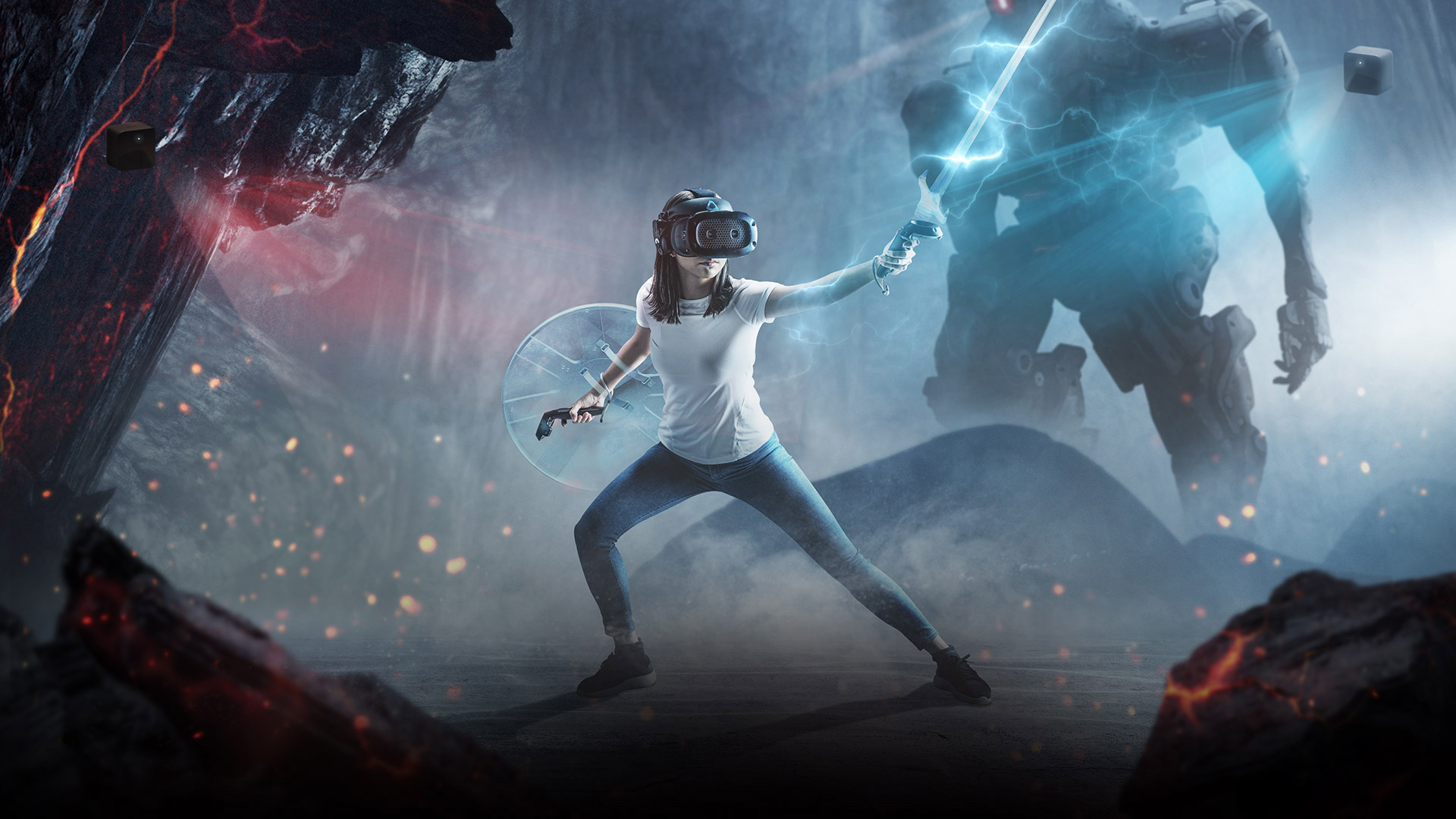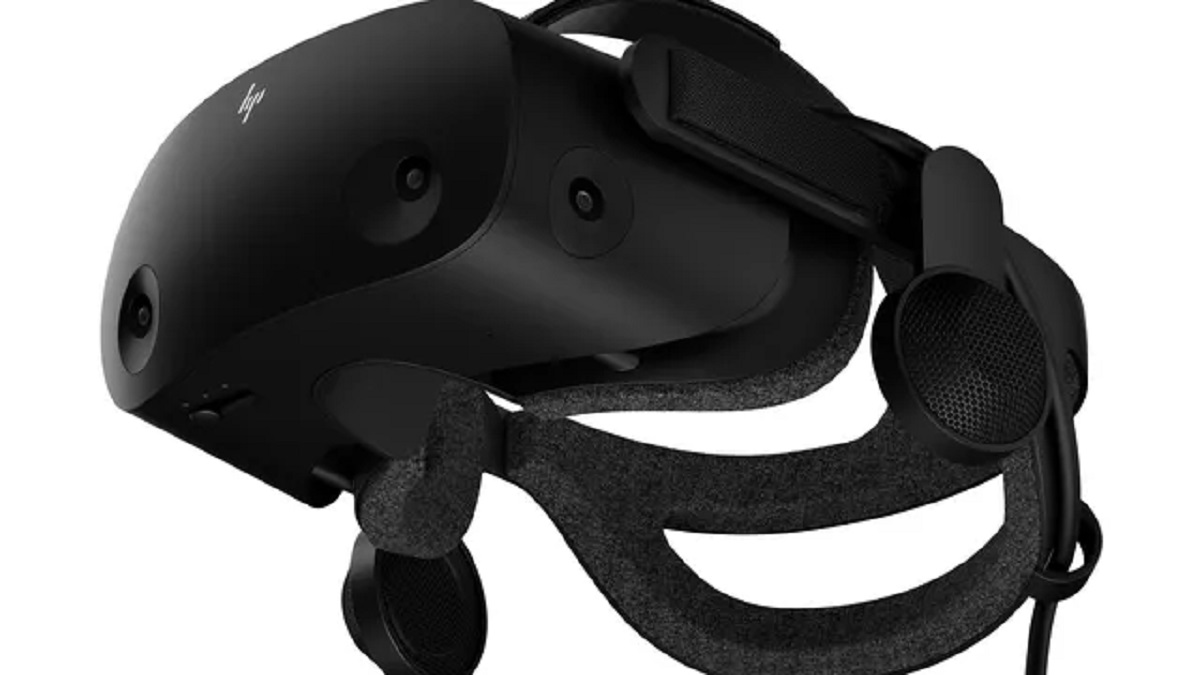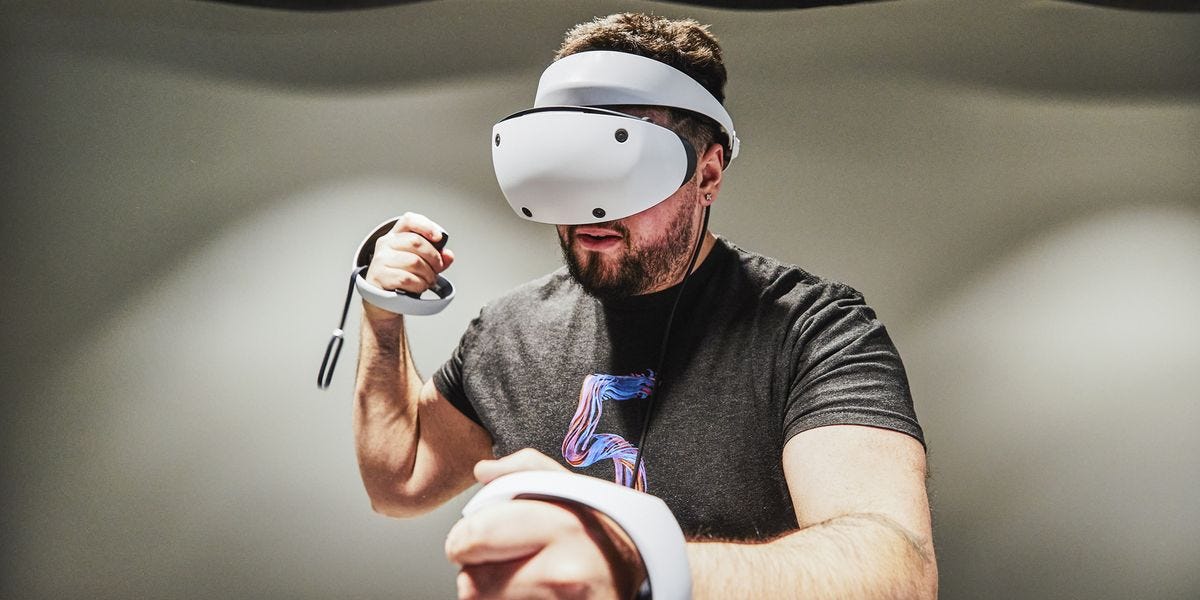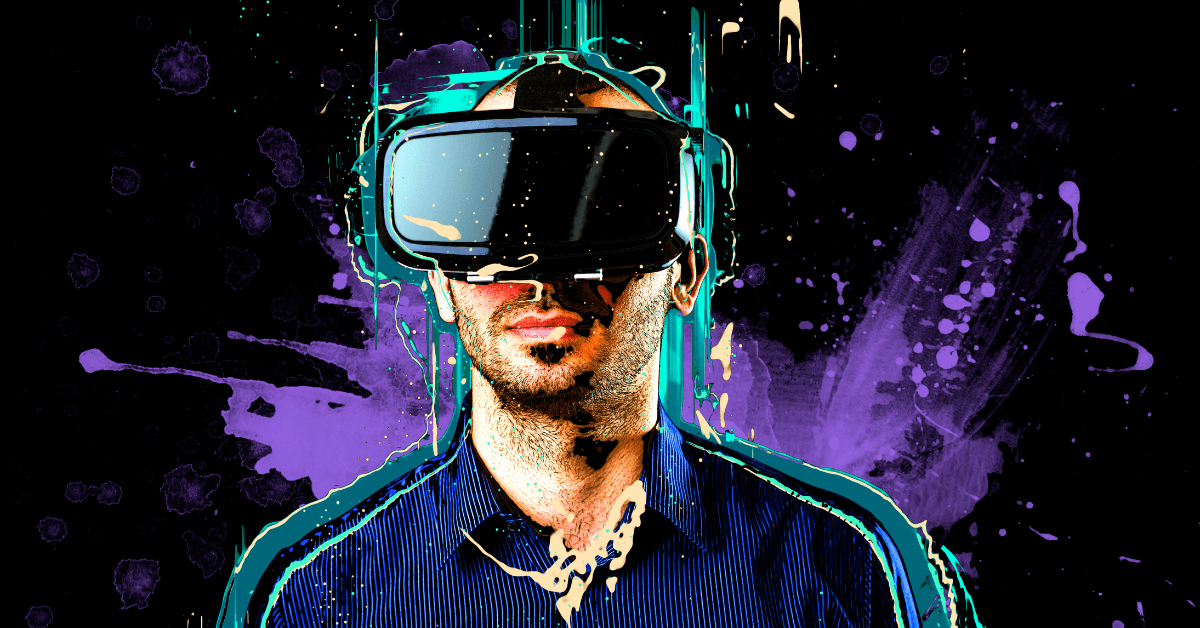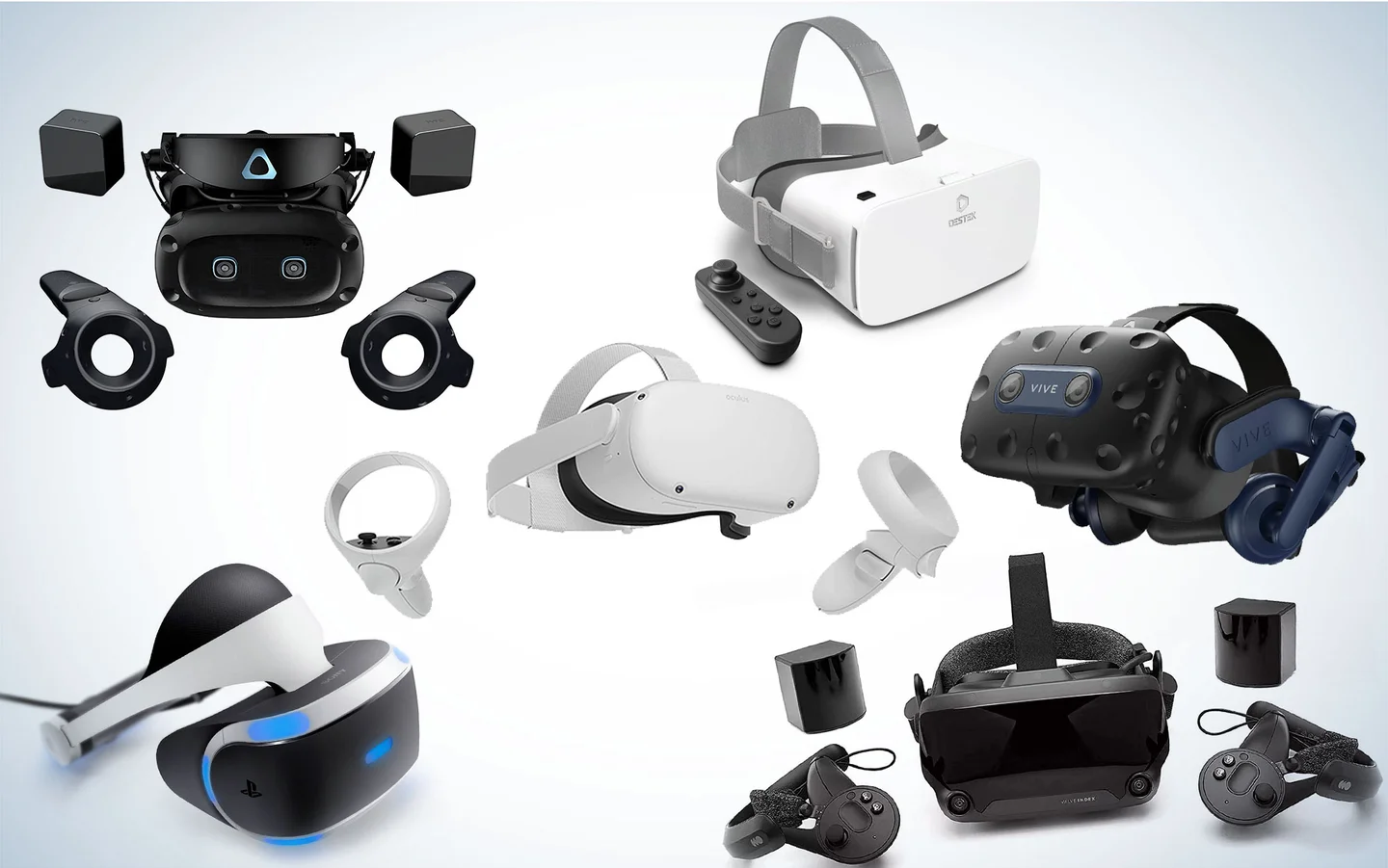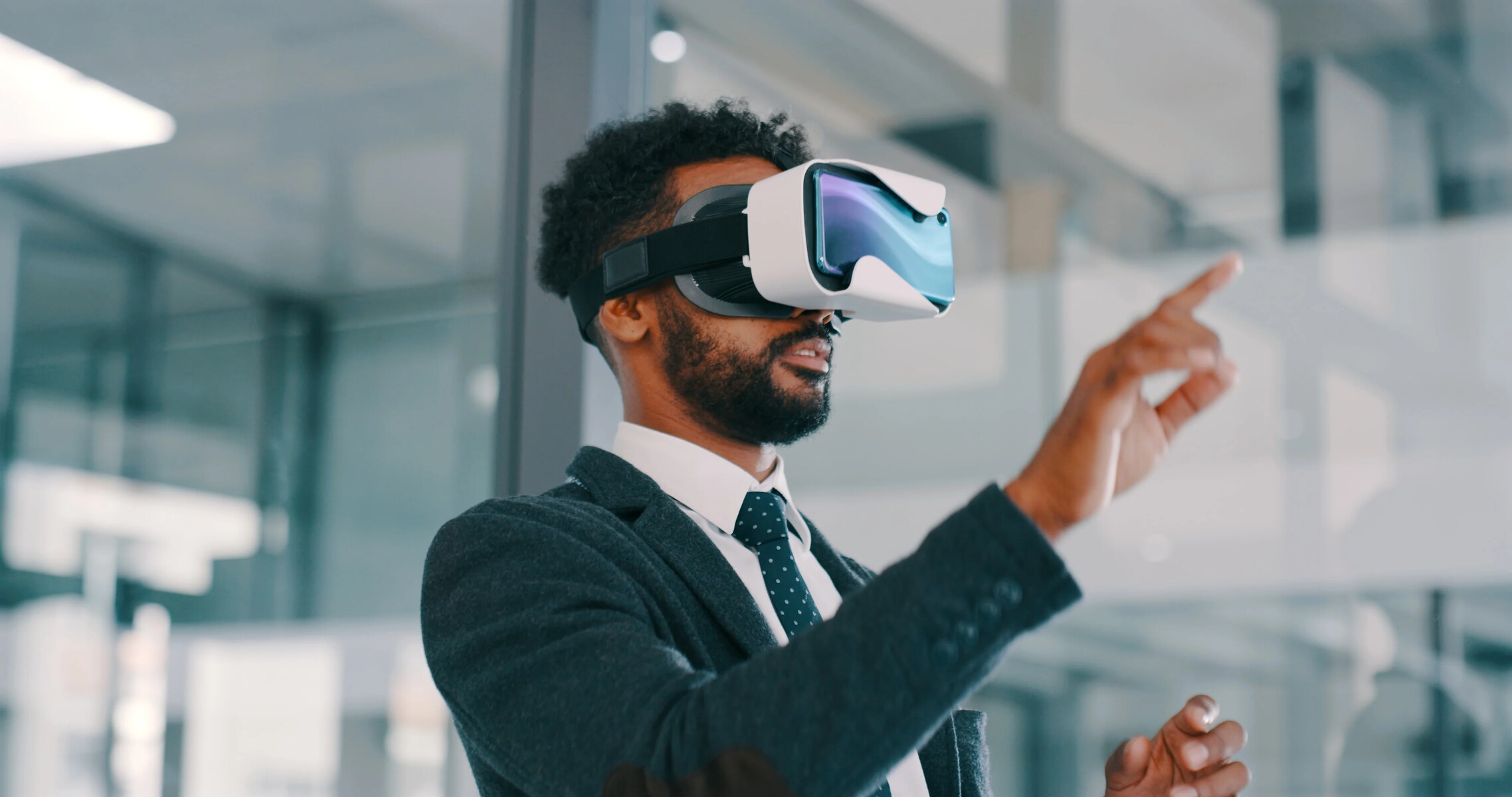Introduction
Virtual Reality (VR) has revolutionized the way we experience digital content, allowing users to immerse themselves in virtual worlds like never before. One of the most captivating forms of VR is the room-scale mode, which enables users to move around and interact with their virtual environment in a physical space. Unlike traditional VR experiences that confine users to a seated or stationary position, room-scale VR offers a more immersive and interactive experience by tracking the user’s movements in real-time. In this article, we will explore how the room-scale mode of VR works, the technologies behind it, and the advantages and limitations of this exciting feature.
The room-scale mode of VR takes the immersive experience to a whole new level by allowing users to explore and interact with virtual environments through natural movements and physical actions. Instead of simply using a controller or joystick to navigate the virtual world, users can walk, crouch, and even reach out and manipulate objects in a more intuitive and realistic way. By mapping the user’s physical movements to their virtual avatar, room-scale VR provides a sense of presence and embodiment that is unparalleled in traditional gaming or entertainment experiences.
To enable room-scale VR, a combination of hardware and software technologies work together to track the user’s movements and accurately represent them in the virtual environment. This involves using sensors, cameras, and algorithms to determine the position and orientation of the user in physical space. The most common room-scale VR systems utilize external tracking devices, such as base stations or sensors, that are placed in the room to track the user’s movements. These devices emit signals, which are picked up by the VR headset and controllers, allowing for precise tracking and interaction.
Room-scale VR offers several advantages over traditional VR experiences. Firstly, it provides a much more immersive and realistic experience by allowing users to physically explore and interact with the virtual environment. This enhances the sense of presence and engagement, making the virtual world feel more lifelike and believable. Additionally, room-scale VR promotes physical activity and movement, which can have health benefits and make VR experiences more interactive and dynamic. Moreover, the ability to freely move around in a room-scale VR setup opens up possibilities for multi-user experiences, where users can interact and collaborate with each other in the virtual environment.
What is the room-scale mode of virtual reality (VR)?
The room-scale mode of virtual reality (VR) takes the immersive experience to a new level by allowing users to physically move and interact within the virtual environment. Unlike standard VR experiences, which typically require users to stay stationary or seated, room-scale VR enables you to navigate and explore the virtual world using your actual physical movements. By creating a virtual space that aligns with the dimensions of your real-world surroundings, room-scale VR allows for a more natural and intuitive interaction.
In a room-scale VR setup, users wear a VR headset that provides a fully encompassing, 360-degree view of the virtual environment. This headset is equipped with motion tracking sensors that capture your head movements and accurately reflect them in the virtual world. Additionally, handheld controllers or accessories may be included to track the movements of your hands and other body parts, enhancing the level of realism and interactivity.
One of the key elements of room-scale VR is accurate tracking. To achieve this, external sensors or base stations are placed within the physical space where the VR experience will take place. These sensors emit signals that are picked up by the VR headset and controllers, allowing for precise tracking of your movements. By continuously updating the position and orientation of your body in real-time, the system ensures that your virtual avatar accurately mirrors your physical actions.
With room-scale VR, you have the freedom to walk, crouch, and reach out in the virtual space, leading to a much more immersive and engaging experience. You can explore virtual worlds, interact with objects, and even engage in physical activities, all while being fully aware of your real-world surroundings. This mode of VR provides a heightened sense of presence, making you feel as though you are truly inside the virtual environment.
It’s important to note that room-scale VR requires adequate physical space for optimal performance. The size of the play area will vary depending on the VR system being used, but generally, a minimum of 2m x 1.5m is recommended. This ensures that you have enough room to move around comfortably and without obstruction. Setting up your play area often involves calibrating the sensors, defining the boundaries, and clearing any potential hazards to ensure a safe and enjoyable experience.
The room-scale mode of VR opens up a whole new world of possibilities for gaming, immersive storytelling, training simulations, and more. By combining physical movement with virtual interactions, it offers an unparalleled level of immersion and realism. Whether you want to embark on a thrilling adventure, solve puzzles, or engage in virtual sports, room-scale VR provides a fully immersive and interactive experience that will transport you to new realms.
How does room-scale VR tracking work?
The room-scale mode of virtual reality (VR) relies on precise tracking technologies to accurately map your physical movements to the virtual environment. This tracking system allows you to freely move around, interact with objects, and explore virtual worlds in a natural and intuitive way.
There are several tracking technologies commonly used in room-scale VR setups:
- External Sensors: Many room-scale VR systems utilize external sensors or base stations that are strategically placed in the room. These sensors emit signals, such as infrared light or laser beams, and the VR headset and controllers have receivers that detect these signals. By precisely calculating the time it takes for the signal to travel from the base stations to the headset or controllers, the system can determine their exact position in the physical space. This allows for accurate tracking of your movements and interactions.
- Infrared Cameras: Some room-scale VR systems use infrared cameras positioned in the room to track special markers on the VR headset and controllers. These markers reflect infrared light emitted by the cameras, allowing them to be detected and tracked in real-time. By triangulating the position of the markers, the system can determine the precise position and orientation of the VR devices, ensuring accurate tracking.
- Inside-Out Tracking: In recent years, inside-out tracking has gained popularity in room-scale VR setups. This technology relies on sensors placed on the VR headset itself, which detect and track the environment around you. By analyzing the movement of the environment, as well as any visual features or patterns, the system can determine the position and orientation of the headset relative to the physical space. Inside-out tracking eliminates the need for external sensors or base stations and offers a more convenient and portable VR experience.
Regardless of the tracking technology used, the goal is to accurately capture your real-world movements and reflect them in the virtual environment. This requires precise synchronization between the VR headset, controllers, and the tracking system. By continuously tracking the position and orientation of the devices in real-time, the system can update your virtual avatar to match your physical movements seamlessly.
In addition to positional tracking, room-scale VR systems may also include other forms of tracking, such as rotational tracking and hand tracking. Rotational tracking allows the system to detect the tilt and rotation of your head or hands, enhancing the overall immersion and realism. Hand tracking technologies, such as capacitive sensors or infrared scanners, enable the system to detect and replicate the movements of your hands and fingers, allowing for more precise and natural interaction with virtual objects.
Overall, room-scale VR tracking is a combination of hardware and software technologies that work together to create a seamless and immersive virtual experience. By accurately tracking your movements, these systems allow you to fully engage with the virtual world, making the experience feel incredibly lifelike and interactive.
Understanding the technologies behind room-scale VR
Room-scale virtual reality (VR) relies on a combination of advanced technologies to create an immersive and interactive experience. These technologies work together to accurately track your movements and position within the physical space, allowing you to seamlessly navigate and interact with the virtual environment. Let’s explore some key technologies that power room-scale VR.
- External Sensors: Room-scale VR systems often utilize external sensors or base stations strategically placed in the room. These sensors emit signals, such as infrared light or laser beams, and the VR headset and controllers have receivers that detect these signals. By precisely calculating the time it takes for the signal to travel from the base stations to the headset or controllers, the system can determine their exact position in the physical space. This enables accurate tracking of your movements and interactions.
- Infrared Tracking: Infrared tracking is a common method used in room-scale VR systems. The VR headset and controllers are equipped with infrared LEDs that emit light patterns. Infrared cameras placed in the room then detect the position and orientation of these LEDs, allowing for precise tracking. The cameras capture and analyze the reflected infrared light, enabling the system to calculate the devices’ position and orientation in real-time.
- Inside-Out Tracking: Another technology used in room-scale VR is inside-out tracking. Inside-out tracking relies on sensors placed on the VR headset itself to detect and track the environment around you. By analyzing the movement of the environment, as well as any visual features or patterns in the room, the system can determine the position and orientation of the headset relative to the physical space. Inside-out tracking eliminates the need for external sensors or base stations and offers a more portable and convenient VR experience.
- Hand and Gesture Tracking: To enhance the user’s interaction with the virtual environment, room-scale VR systems often incorporate hand and gesture tracking technologies. This allows the system to detect and replicate the movements of your hands and fingers in real-time. Capacitive sensors or infrared scanners built into the controllers or the VR headset can accurately track the position and movement of your hands, enabling natural and intuitive interactions with virtual objects.
- Real-Time Positional Tracking: Real-time positional tracking is a fundamental component of room-scale VR. It ensures that your movements and position in the physical space are accurately represented in the virtual environment. By constantly updating the position and orientation of the VR headset and controllers, the system creates a seamless and immersive experience. This is crucial for maintaining a sense of presence and allowing you to interact with the virtual world as if you were physically present within it.
Overall, the technologies behind room-scale VR work in conjunction to create a captivating and lifelike experience. External sensors, infrared tracking, inside-out tracking, hand and gesture tracking, and real-time positional tracking combine to enable you to freely explore virtual environments, interact with objects, and fully immerse yourself in alternate realities.
Advantages and limitations of room-scale VR
Room-scale virtual reality (VR) offers a range of advantages that enhance the immersive and interactive nature of the VR experience. However, there are also certain limitations that users should be aware of. Let’s explore the advantages and limitations of room-scale VR.
Advantages of room-scale VR:
- Immersive Experience: Room-scale VR provides a highly immersive experience by allowing users to physically move and interact within the virtual environment. This level of interactivity creates a stronger sense of presence, making you feel like you are truly part of the virtual world.
- Natural Interaction: With room-scale VR, users can engage in natural interactions, such as walking, crouching, and reaching out to grab objects. This intuitive and realistic form of interaction adds to the immersion and enhances the feeling of being fully engaged within the virtual environment.
- Physical Activity: Room-scale VR encourages physical movement and activity, making it an engaging and interactive way to exercise while having fun. By walking, dodging, and performing other physical actions, users can incorporate physical activity into their VR experiences.
- Multi-User Experiences: Room-scale VR setups can accommodate multiple users in the same physical space, opening up possibilities for collaborative and multiplayer experiences. Users can interact and engage with each other within the shared virtual environment, facilitating social interactions and cooperative gameplay.
- Real-World Awareness and Safety: Room-scale VR allows users to maintain awareness of their real-world surroundings. By defining a boundary or play area, users can navigate and interact in the virtual space without the risk of colliding with physical objects. This feature promotes a safer and more comfortable VR experience.
Limitations of room-scale VR:
- Physical Space Requirements: Room-scale VR requires a dedicated physical space to ensure optimal performance. Users need to have enough room to move around comfortably without obstruction. Those with limited physical space may need to consider alternative VR setups that are more suitable for their environment.
- Setup and Calibration: Setting up a room-scale VR system can be more involved compared to other VR configurations. It typically involves installing and calibrating external sensors or base stations, defining the play area, and ensuring proper alignment for accurate tracking. Users should be prepared to invest time and effort in the initial setup process.
- Cost: Room-scale VR setups can be more expensive due to the need for additional hardware, such as base stations, sensors, and controllers. Compared to other VR options, the cost of entry for room-scale VR may be higher, which is an important consideration for those on a budget.
- Motion Sickness: As with any form of VR, some users may experience motion sickness or discomfort during room-scale VR experiences, especially if they are sensitive to artificial locomotion or have a condition that makes them more prone to motion-related symptoms. It is important for users to take breaks and adjust VR settings to minimize discomfort.
Despite these limitations, the advantages of room-scale VR, including its immersive nature, natural interaction, physical activity, and potential for multi-user experiences, make it an exciting and captivating form of virtual reality that continues to push the boundaries of entertainment and interaction.
Setting up a room-scale VR experience
Setting up a room-scale virtual reality (VR) experience requires careful planning and configuration to ensure optimal performance and safety. Here are the key steps to follow when setting up a room-scale VR system:
1. Determine the available space:
Measure the dimensions of the room where you plan to set up your room-scale VR experience. It is important to have enough space to move around comfortably without any obstacles. Most room-scale VR setups recommend a minimum play area of 2m x 1.5m, but check the requirements of your specific VR system for accurate measurements.
2. Clear the play area:
Remove any furniture, objects, or hazards that may obstruct your movement or pose a risk during your VR experience. Ensure that there are no sharp edges, fragile items, or trip hazards within the play area. Create a safe and open space that allows you to move freely without the risk of colliding with anything.
3. Install external sensors or base stations:
If your room-scale VR system requires external sensors or base stations, carefully follow the manufacturer’s instructions to install them in the room. Place the sensors or base stations in locations that provide optimal coverage of the play area. Ensure they are securely mounted or positioned to avoid any movement or misalignment during use.
4. Connect the VR headset and controllers:
Connect your VR headset and controllers to your computer or gaming console according to the manufacturer’s instructions. Ensure all cables are securely connected and that the devices are properly powered on.
5. Position and calibrate the room-scale setup:
Launch the room-scale VR setup software provided by your VR system. This software will guide you through the process of defining the play area boundaries and calibrating the system for accurate tracking. Follow the on-screen prompts and carefully walk around the play area, making sure to stay within the defined boundaries, so that the system can accurately map the physical space to the virtual environment.
6. Test the system:
Once the setup and calibration are complete, test the room-scale VR system to ensure everything is working correctly. Take a few steps, move your hands, and interact with the virtual environment to verify that the tracking and movement feel accurate and responsive. Adjust any settings or fine-tune the setup if necessary.
7. Consider safety precautions:
While using room-scale VR, it’s important to take necessary safety precautions. Be aware of your surroundings and any obstacles that may pose a risk during your VR experience. Consider using protective padding or matting on hard floors if you plan on engaging in more physical activities. Additionally, set clear rules and guidelines for anyone else in the room to avoid accidental interruptions or collisions.
By following these steps, you can properly set up a room-scale VR experience that provides an immersive and safe environment for your virtual adventures.
Tips and best practices for room-scale VR
Room-scale virtual reality (VR) offers an immersive and interactive experience that can take your gaming and virtual adventures to new heights. To make the most of your room-scale VR setup and enhance your overall experience, here are some tips and best practices to keep in mind:
1. Clear and designate the play area:
Ensure that the play area is clear of any obstacles and hazards. Remove furniture, fragile objects, and any items that may pose a risk during your VR sessions. Clearly designate the boundaries of the play area using rugs, mats, or tape to create a visual reminder of the safe space to move within.
2. Take breaks and stay hydrated:
Engaging in room-scale VR experiences can be physically active and demanding. Remember to take regular breaks to rest and stay hydrated. VR sessions can be immersive, and it’s easy to lose track of time, so set reminders to prevent extended periods of continuous play.
3. Consider comfortable clothing and accessories:
Wear comfortable clothing that allows for free movement during your VR sessions. Avoid wearing excessive jewelry or loose-fitting garments that may interfere with the tracking of your movements. Additionally, consider using sweat-wicking materials to stay cool and comfortable during more physically demanding VR experiences.
4. Experiment with play area configurations:
Don’t be afraid to experiment with different configurations of your play area. Move furniture or use temporary room dividers to create a larger or more optimized space for your VR experiences. Adjusting the layout and setup can provide a more comfortable and immersive environment.
5. Be mindful of your surroundings:
Even within the play area, be aware of any low ceilings, light fixtures, or other physical objects that may be within your reach. Stay mindful of your surroundings and avoid any potential collisions or accidents that could occur if you reach too far or don’t take into account the limitations of the physical space.
6. Optimize lighting conditions:
Ensure that the room where you use your room-scale VR setup is well-lit, but avoid direct sunlight or bright lights shining directly towards the VR headset or the tracking sensors. Excessive light or glare can impact the tracking accuracy and overall experience.
7. Calibrate and update your equipment:
Regularly calibrate and update your VR equipment to ensure optimal performance. Follow the manufacturer’s instructions for firmware updates and calibration procedures. Keeping your equipment up to date can improve tracking accuracy and address any known issues or bugs.
8. Invest in accessories and comfort enhancements:
Consider investing in accessories and comfort enhancements to enhance your room-scale VR experience. This could include padded mats for more comfortable standing, anti-fatigue mats, or protective covers for your VR controllers to prevent wear and tear.
9. Read and follow the manufacturer’s guidelines:
Always refer to the manufacturer’s guidelines, user manuals, and safety precautions specific to your room-scale VR system. Each system may have unique requirements and recommended practices, so it’s important to familiarize yourself with the guidelines to ensure optimal performance and safety.
By following these tips and best practices, you can maximize your room-scale VR experience, ensuring a comfortable, engaging, and immersive adventure in the virtual world.
Exploring popular room-scale VR games and experiences
Room-scale virtual reality (VR) opens up a world of exciting gaming and immersive experiences. Whether you’re a fan of action-packed adventures, mind-bending puzzles, or immersive storytelling, there are numerous popular room-scale VR games and experiences to explore. Here are some highlights:
1. “The Elder Scrolls V: Skyrim VR”:
Step into the vast and epic world of Skyrim in a whole new way with this popular room-scale VR adaptation of the beloved RPG. Explore the rolling hills, ancient ruins, and dangerous dungeons while engaging in epic battles and embarking on thrilling quests.
2. “Superhot VR”:
In “Superhot VR,” time moves only when you move, creating a unique and immersive gameplay experience. Engage in intense first-person combat as you dodge bullets, take out enemies, and solve spatial puzzles in a visually striking minimalist world.
3. “Beat Saber”:
Get your heart pumping and your body moving in this rhythmic VR game. Armed with virtual sabers, slash through beat-powered musical levels while dodging obstacles and enjoying an electrifying audio-visual experience.
4. “Job Simulator”:
Experience the comical side of work with “Job Simulator.” Step into quirky, futuristic workplaces and interact with objects, complete tasks, and follow hilarious instructions. It’s a lighthearted and immersive simulation game that offers hours of fun.
5. “Arizona Sunshine”:
This popular room-scale VR game takes you into a post-apocalyptic Arizona infested with zombies. Arm yourself with an arsenal of weapons and try to survive the hordes of undead while unraveling the mystery behind the outbreak.
6. “Moss”:
“Moss” is an enchanting VR puzzle-platformer that tells the story of a brave little mouse named Quill. Guiding Quill through mesmerizing environments, you will solve puzzles, battle enemies, and uncover the secrets of a magical world.
7. “Space Pirate Trainer”:
Become a futuristic space pirate in this thrilling room-scale VR shooter. Equip yourself with an array of high-tech weapons and gadgets to battle against waves of intergalactic enemies in an immersive and visually stunning space setting.
8. “I Expect You to Die”:
Embrace your inner spy in this escape room-style VR experience. Solve intricate puzzles, complete daring missions, and outsmart your adversaries as you navigate dangerous scenarios in this immersive and highly interactive spy adventure.
9. “Gorn”:
Enter the brutal and comically violent world of “Gorn.” In this gladiator-style combat game, you engage in physics-based battles against other fighters, using an assortment of weapons and your bare hands to emerge victorious.
10. “The Climb”:
Embark on a breathtaking climbing adventure in “The Climb.” Scale towering cliffs, traverse treacherous landscapes, and immerse yourself in stunning environments as you challenge yourself in this visually stunning and physically engaging VR experience.
These are just a few examples of the many popular room-scale VR games and experiences available. Whether you’re seeking thrilling action, captivating storytelling, or mind-bending puzzles, the world of room-scale VR has something to offer for every virtual adventurer.
Conclusion
The room-scale mode of virtual reality (VR) offers a truly immersive and interactive experience, allowing users to physically move within the virtual environment and engage with their surroundings in a natural and intuitive way. By harnessing advanced tracking technologies and precise mapping of physical movements to the virtual space, room-scale VR creates a heightened sense of presence and realism that traditional VR experiences cannot match.
From exploring fantastical realms to engaging in intense battles and solving intricate puzzles, room-scale VR opens up a world of possibilities for gaming, storytelling, training simulations, and more. With the ability to walk, crouch, and reach out, users can experience virtual worlds like never before, feeling fully immersed and engaged with the digital content.
While room-scale VR offers numerous advantages, such as an immersive experience, natural interaction, physical activity, and the potential for multi-user experiences, it does come with certain limitations. Setting up a room-scale VR system requires adequate physical space and careful calibration to ensure optimal performance. The initial cost of entry can be higher compared to other VR setups, and some users may experience motion sickness or discomfort during prolonged use. However, as the technology continues to advance, these limitations are gradually being addressed and minimized.
With popular room-scale VR games and experiences, users can embark on thrilling adventures, test their skills, and indulge in creative exploration. From traversing virtual landscapes to engaging in intense combat or solving intricate puzzles, the possibilities are endless.
To fully enjoy a room-scale VR experience, it is important to follow best practices, such as clear and designate the play area, take regular breaks, optimize lighting conditions, and stay mindful of your surroundings. By adhering to these tips, users can have a comfortable and safe VR experience.
In conclusion, room-scale VR opens up a new dimension of gaming and interactive entertainment, providing an unparalleled level of immersion and realism. As technology continues to advance, the potential for room-scale VR experiences will only expand, offering users more engaging and transformative adventures in the virtual world.







